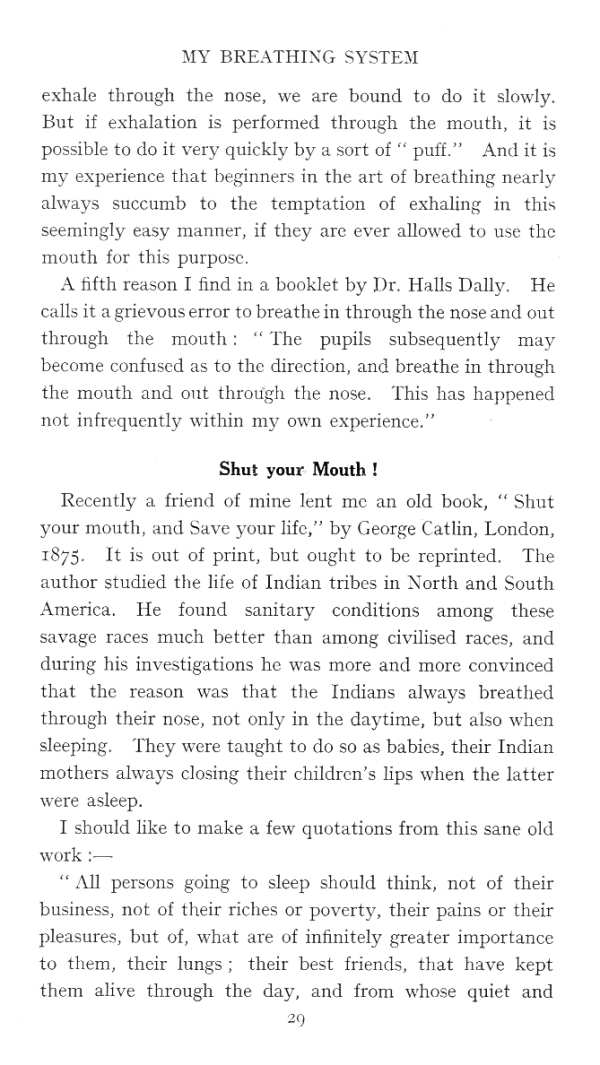mbs 029

MY BREATIIING SYSTEM
exhale tlirough the nose, we are bound to do it slowly. But if exhalation is performed through the mouth, it is possible to do it very ąuickly by a sort of “ puff.” And it is my experience that beginners in the art of breathing nearly always succumb to the tcmptation of exhaling in this seemingly easy inanner, if they are ever allowed to use the mouth for this purposc.
A fifth reason I find in a booklet by Pr. Halls Daily. He calls it a grievouserror to breathe in through the nose and out through the mouth: “ The pupils subseąuently may become confuscd as to the direction, and breathe in through the mouth and out through the nose. This has happened not infreąuently within my own experience.”
Shut your Mouth !
Recently a friend of minę lent mc an old book, " Shut your mouth, and Save your lifc,” by George Catlin, London, 1875. It is out of print, but ought to bc reprinted. The author studied the life of Indian tribes in North and South America. He found sanitary conditions among these savage races much better than among civilised races, and during his investigations he was morę and morę convinced that the reason was that the Indians always breathed through their nose, not only in the daytime, but also when sleeping. They were taught to do so as babics, their Indian mothers always closing their childrcn’s lips when the latter were asleep.
I should like to make a few ąuotations from this sane old work:—
“ Ali persons going to sleep should think, not of their business, not of their riches or poverty, their pains or their pleasures, but of, what are of infinitely greater importance to them, their lungs ; their best friends, that have kept them alive through the day, and from whose quiet and
20
Wyszukiwarka
Podobne podstrony:
mbs 068 MY BREATHING SYSTEM I think I was the first author who prescribed exactly, in each single cx
mbs 045 MY BRKATHINTt SYSTEM our breathing ? ” The author (Dr. Hulbert) submits that this is accompl
88282 mbs 057 MY BRFATHING SYSTEM widening of the thorax resembles, to some extent, the move-ments o
58573 mbs 088 MY BREATIIING SYSTEM EXERCISE No. 2. One-sidcd fuli breathing during sideways-bending
38691 mbs 016 MY BREATHING SYSTEM One of the most comraon rcgulations for soldiers is: Chest outward
28717 mbs 112 MY BREATIIING SYSTEM muscles while in-figliting, and lie also admitted that they had b
więcej podobnych podstron